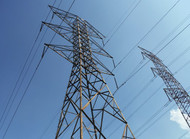14 Different Types of Electrical Wire and Cable and Their Applications
24th Jan 2023
When it comes to electrical wiring and cable, there is no one-size-fits-all solution. Different applications require different types of cable, and with so many different varieties available, it can be difficult to know which type is best for your needs. To help make your selection easier, here are 14 of the most common types of specialty electrical cable and wire, along with their uses.
- Coaxial Cable: Coaxial cable is a type of shielded cable that is commonly used for radio frequency signals, such as those used in television, satellite, and internet connections. It is composed of an inner conductor, an outer conductor, and an insulating material between the two.
- Fiber Optic Cable: Fiber optic cable is a type of cable that uses light signals to transmit data. It is made of a thin glass or plastic fiber, surrounded by protective layers of insulation and jacketing. It is used for high-speed data transmissions, such as in telecommunications and computer networks.

- Multi-Conductor Cable: Multi-conductor cable is a type of cable that contains multiple conductors within a single jacket. It is typically used in wiring applications that require multiple wires, such as in audio systems or home theater systems.
- Cat5e Cable: Cat5e cable is a type of twisted pair cable used in Ethernet networks. It is composed of four pairs of twisted copper wires, and is capable of carrying data at up to 1 gigabit per second.
- Cat6 Cable: Cat6 cable is a type of twisted pair cable that is similar to Cat5e, but is capable of carrying data at up to 10 gigabits per second. It is commonly used in high-speed network applications.
- Power Cable: Power cable is a type of cable that is used to carry electrical power. It is composed of an insulated conductor, such as copper or aluminum, and is typically used in industrial, commercial, and residential applications.
- Low Voltage Cable: Low voltage cable is a type of cable that is used to transmit power at a voltage lower than the normal operating voltage of the equipment it is connected to. It is commonly used in security systems, fire alarms, and lighting systems.
- Speaker Cable: Speaker cable is a type of cable that is used to connect audio equipment, such as speakers and amplifiers. It is composed of two insulated conductors, and is usually terminated with a pair of banana plugs.
- Control Cable: Control cable is a type of cable that is used to transmit control signals between devices. It is composed of two or more conductors, and is usually used in industrial automation applications.
- Marine Electrical Cable: Marine electrical cable is a type of cable that is designed to withstand the harsh conditions of the marine environment. It is composed of an insulated conductor, and is typically used in boats and other watercraft.
Marine electrical cable, also known as marine grade or marine battery cable, usually has a very high conductor count, which keeps the cable highly flexible. Additionally, these conductors are usually individually tinned, which helps resist corrosion.
- Welding cable: Welding cable is an electrical cable used for welding and power applications. It is designed to be flexible and resistant to oil, grease, acid, and abrasion. It is made from stranded copper conductors and insulated with a special high-temperature rubber compound. This type of cable is used in many welding and electrical applications, such as in portable welding equipment, automotive repairs, and in construction sites.
Welding cable is designed to be flexible and able to handle high temperatures. The conductors are usually stranded copper, which is more flexible than solid copper. The insulation is usually a special high-temperature rubber compound that is resistant to oil, grease, acid, and abrasion. This insulation helps protect the cable from damage and wear and tear.
- Fire alarm cable: Fire alarm cable is a critical component of any fire alarm system, as it is used to transmit signals from smoke detectors, heat detectors, and other alarm devices to the control panel. Fire alarm cable is designed to be fire-resistant, so it can survive a fire and continue to function. Knowing the different types of fire alarm cable available can help you choose the best type for your needs.
The most common type of fire alarm cable is called plenum cable. It is designed to be fire-resistant, and is usually made of a type of plastic called fluorinated ethylene propylene (FEP). Plenum cable is often used in commercial buildings, as it is approved for use in air-handling spaces. It is also often used in residential buildings.
Another type of fire alarm cable is riser cable. This type of cable is used to connect devices on different floors of a building. It is designed to be fire-resistant and is usually made of a type of plastic called polyvinyl chloride (PVC). Riser cable is required by most building codes and is often used in commercial and residential buildings.
- Photovoltaic cable: Photovoltaic (PV) cables are a type of electrical wiring specifically designed for use in photovoltaic systems. PV cables are designed to interconnect the components of a photovoltaic system, including solar panels, inverters, charge controllers, and batteries. PV cables are manufactured from a variety of materials, including copper, aluminum, and lead-free PVC or Teflon.

PV cables are typically rated for 600 volts and are designed to operate in temperatures ranging from -40°C to 90°C. They are also UV and ozone resistant and are insulated with a variety of materials, including ethylene propylene rubber, silicone rubber, and cross-linked polyethylene. PV cables are also flame retardant and are designed to resist abrasion, oil, and weathering.
- Armored cable: Armored electrical cable, also known as metal clad cable (MC cable) or interlocked armored cable, is a type of wiring that is used in commercial and industrial settings. This type of cable is designed to provide a higher level of electrical protection than traditional non-armored cables. Armored electrical cable is made of a flexible metal sheath, usually made of aluminum or steel, that surrounds and protects the individually insulated conductors.
The metal sheath is designed to provide protection from physical damage, as well as protection from environmental factors such as moisture and corrosion. The metal sheath is also designed to reduce the risk of electrical shock and fire in the event of an electrical short. Armored electrical cable is commonly used in areas where there is a risk of physical damage to the wiring, such as in areas with heavy foot traffic or in areas with high levels of vibration.
Armored electrical cable is also used in hazardous locations, such as areas with flammable gases and vapors. The metal sheath provides additional protection against sparks and arcs that could ignite the hazardous materials. Armored electrical cable is also used in areas where there is a risk of electrical noise interference, such as near high-voltage power lines.
Quality Marine Electrical Cable, Welding Cable, and PV Cable, Online at Great Prices
When selecting the right type of cable or wire for your application, it is important to consider the environment it will be used in, the voltage and amperage requirements, and the signal type it will be transmitting. By choosing the right type of cable or wire for your needs, you can ensure that your system will operate safely and reliably.
At EWCS Wire, we carry a wide selection of specialty electrical wire and cable to meet your needs. Whether you’re looking for welding cable, instrumentation cable, power cable, or any other type of cable or wire, we have the products to help you get the job done. Contact us today to learn more about our selection of specialty electrical wire and cable.

